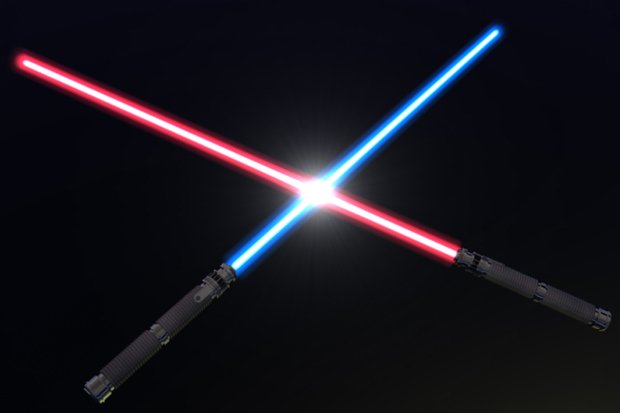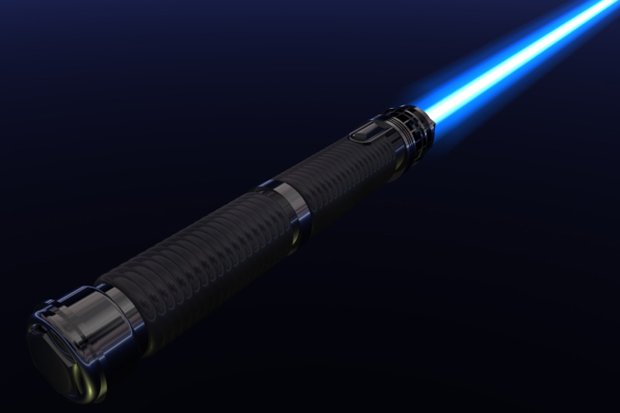Ask GR Anything: How do lightsabers work?
Celebrating the release of The Old Republic, we ask mankind’s oldest question

Ask GR Anything is a weekly Q%26A column that answers questions submitted by readers (as well as questions we're particularly curious about ourselves). Got a burning question about games or the industry? Ask us in the comments below and you may just get it answered!
This week’s question comes not from a specific person, but from deep within the recesses of our collective minds. If you have a soul, then you’ve probably wondered, at some point, whether or not NASA will ever make good on all that money we’ve been sending them and bring home a lightsaber from one of their little trips. Or at the very least, somebody could make a crappy one just to show off on YouTube. Is it even possible? Given that it’s launch week for The Old Republic, we thought we’d try to find out.

The major force at work in a lightsaber is plasma, which is very real. To put it bluntly, plasma is the coolest thing on the planet. It’s not very common, but when it’s in the room, you’re going to know about it. What’s plasma? Plasma is lightning. Or to be more precise, it’s a highly excited form of gas. But it’s also not really gas. Confused? Good, that means you understand. Plasma is so weird that it’s earned a status as a completely different type of matter apart from solids, liquids and gases.
But this is good for us, because plasma can be used to melt crazy amounts of anything. There are things called arc furnaces that are used to melt huge amounts of scrap metal. Plasmas can have energy levels that take them to ridiculous temperatures. This has a couple different implications for lightsabers.
On the one hand, when we see Jedi/Sith slicing dudes up, that’s kinda realistic in a way. You don’t mess with plasma. But on the other hand, plasma isn’t something you can heat up in the handle of a flashlight (aka lightsaber).
“It still takes a lot of energy to melt things, so this energy must first be put into the plasma before the plasma can melt anything,” said a representative of the Princeton Plasma Physics Laboratory when we emailed asking lightsaber questions. So it’s fairly unrealistic to think that a plasma sword that large could be sustainably powered for a stretch of time far from a power source. Ultra-nerds estimate the power usage at several mega-watt hours per use. But then again, it’s Star Wars. They’ve got Wookiees; anything is possible.

We actually have handheld plasma devices that are hooked up to very large power supplies. They’re called plasma torches, but don’t get excited. Plasma torches require contact with the metal you’re working with in order to form. But when they do light up…they burn at a mind-blowing 45,000 degrees. For those of you keeping score at home, that’s about four times hotter than the surface of the sun. Like we said, don’t mess with plasma.
Sign up to the GamesRadar+ Newsletter
Weekly digests, tales from the communities you love, and more
The lightsaber problem was dissected some time ago by an engineer at General Electric, who broke down the machine and tried to figure out a way to make one work. He also took the time to rip apart George Lucas’ insane vision for how a lightsaber might work. Lightsabers have a focusing crystal (one of the most important parts) which focuses the plasma into a stable beam. But as the GE engineer points out, that doesn’t make sense on even the most basic level.
“There are […] no crystals that can ‘direct’ a plasma. In fact, a plasma ‘being directed’ by a crystal lens doesn’t make any physical sense anyway. A plasma is really just an ionized gas.” What he’s saying is that you can’t focus plasma through a crystal any more than you can focus the wind through your glasses. Gases don’t pass through solids.

That said, this guy (whose name is Matt Gluesnkamp, if you care) also believes that a laser-based lightsaber could be possible. Although it’d be more akin to No More Heroes than Star Wars.
“An electrical arc can have wild shifts in direction, and it can hardly be controlled without being surrounded by magnets,” Gluesnkamp said. “A laser will go in a straight line, but of course it doesn’t stop. A laser-based lightsaber would require a block or a couple of mirrors floating in midair, moving in sync with the hilt – which is of course largely impossible.”
So no, you can’t have a lightsaber. But you can buy a plasma torch online for a little over a thousand dollars. They’re not going to work like the industrial ones, but if you absolutely need to melt through some capital ship blast doors, then that’s probably your best bet.
Submit your own questions in the comments (or Tweet them to @sciencegroen) and we may tackle them for a future Ask GR Anything.


